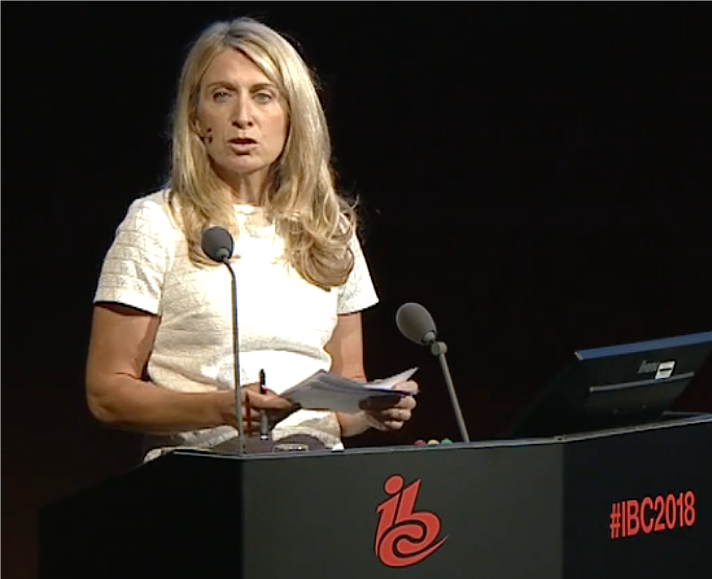Why News Broadcasters Need to Cut the Cord for ENG
Part 1
Journalism, worldwide, is in crisis. The bottom of its nosedive is not yet in sight. There are far more reporter layoffs than hires. Numerous technologies—the internet for one—and revenue-sucking behemoths—like the Google/Facebook duopoly—are shaking up legacy means of newsgathering and distribution. Digital disruption is harming journalism far more than benefiting.

News delivery via newsprint is on death watch. On the TV side, linear news delivery via the news show format is dying more slowly, but surely. A dwindling number of airwave, cable and satellite news consumers are willing to tune in at a certain time, at a certain place, on a certain screen and patiently wait to get the news and entertainment they really want. No wonder internet/IP-centric technologies like video-on-demand, next-gen, over-the top (OTT) television will soon overtake certain-time TV. No surprise that broadcast giants are scrambling to deliver their information and entertainment wares through OTT.
Even though most news publishers and broadcasters have long been online, many of their web offerings are merely rehashed versions of their offline products. Being there is not the same as succeeding there. “Digital first” has really meant “print first” and “video last.”
The “pivot to video” has been a colossal failure for most newspapers. “Those who pivoted to video didn’t really understand how expensive it is to produce high-quality video if you don’t have the infrastructure necessary to support it,” said Trevor Fellows, vice president of digital strategy for NBC.
Of course, television news outlets already had infrastructures in place to produce online video—no pivot needed. But, pretty much across the board, that infrastructure consists of outmoded, ponderous, expensive equipment and workflows. Bottom line: neither publishers nor broadcasters, generally, are very good at producing online news video.
Because the web is 24/7, its news outlets need cheaper, more mobile newsgathering equipment and much faster, less expensive video production systems and methods. Legacy television stations can’t come close to meeting a demand for online news by taking reporters off the street. Some are laid off, others converted to so-called "multimedia reporters" who spend more time in the newsroom than in the field. Resorting to shameless aggregating and clickbaiting isn’t working either. New technologies and workflows need to not just improve news distribution but also the quality and quantity of news content.

Happily, there are glimmers of hope. One is NBC’s bold, plug-pulling move in connection with its recent partnership with Euronews. At the 2018 IBC Show in Amsterdam Deborah Turness, the new president of NBC News International at NBC News, announced their discontinued reliance on ENG cameras and SNG trucks.
“We’ve cut the cord with cameras and trucks, and armed our network of 100 percent mobile journalists with iPhones, LiveU and Osmo,” she said about her remaking of Euronews. “I think we’re the only major news operation to only deploy iPhones having cut the cord with cameras and trucks.”
Euronews may not actually be the first major news outlet to turn fully to mobile journalism. Last year New Delhi Television (NDTV) switched to a video journalism model where its reporters shoot and edit news video using Samsung smartphones, a change the press referred to as mojoification.
But what Turness is doing is a much bigger deal. Where financially troubled NDTV acted more out of desperation— to cut costs—NBC is acting more out of inspiration—to add speed and mobility. If successful NBC could hasten journalism’s snail’s-pace shift from ENG to smartphone newsgathering, a transition that will become as big or bigger than the pivot from film to ENG in the late 70s and early 80s. That film-to-ENG transition not only facilitated live reporting, but also sophisticated editing of news packages. It’s now something smartphones can accomplish with teeny-weeny appliances and cellular connections at relatively minuscule cost.
Savings could and should be used to put more, quick-reacting boots on the ground. Turness refers to her “small army of journalists” equipped with mobile phones. She calls it “real-time journalism” where “you can go places and engage with people with a mobile phone in ways you cannot with a camera person and a big camera.” “You disrupt the oxygen in the room when you enter with a TV crew normally,” she told IBC attendees. “When you go in with an iPhone you are small and quite innocuous.”

Taking another swipe at conventional ENG/SNG live reporting she said iPhone journalism “is a more authentic, transparent way of storytelling. Our reporters are not perfectly coiffed, standing on a riser with a light and a cable plugged into a truck. They are on the move, they take you with them.”
Turness told The Drum, a European marketing website, “When you look at television news as a product I feel it is looking very tired and out of step.” “While other news organizations have dabbled with iPhone journalism it’s often as a supplement when the other camera isn’t working”.
That supplement status is doing little to rescue journalism. Until smartphone newsgathering largely displaces ENG/SNG those outmoded technologies and workflows will continue wasting huge sums that could be spent to hire, train and equip mobile journalists thereby increasing the quality and quantity of video stories available to news consumers.
Turness may understand that smartphone newsgathering and ENG can no longer peacefully co-exist. The only way to take the handcuffs off smartphone newsgathering is to lay ENG/SNG technologies and workflow to rest and give them the honorable burial they deserve.
Coming up, Part 2: Euronews’s iPhone Journalism: What Could Go Wrong?
Get the TV Tech Newsletter
The professional video industry's #1 source for news, trends and product and tech information. Sign up below.
